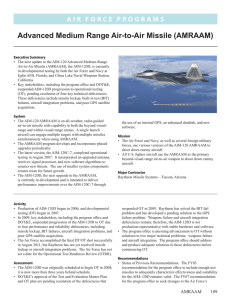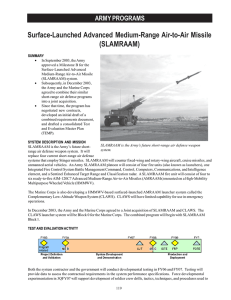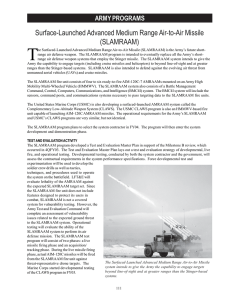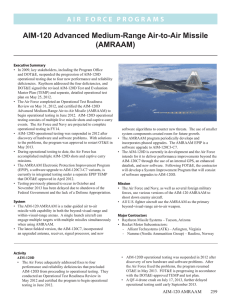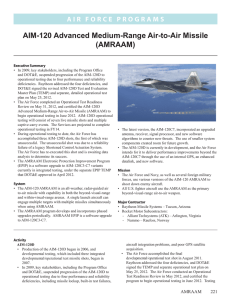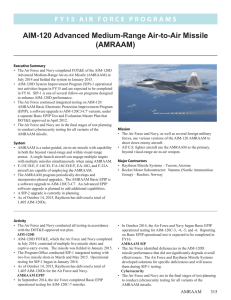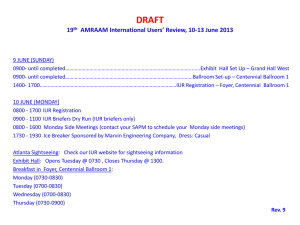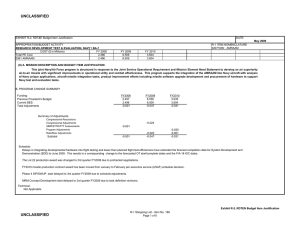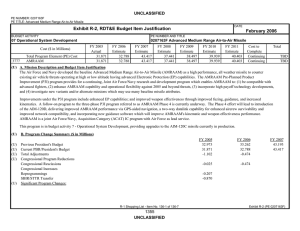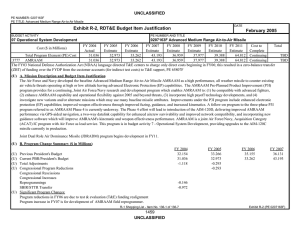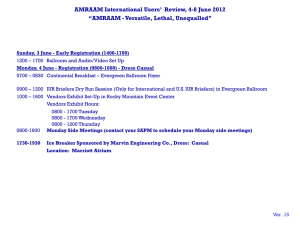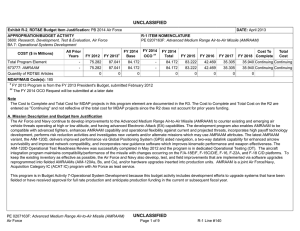Advanced Medium-Range Air-to-Air Missile (AMRAAM)
advertisement
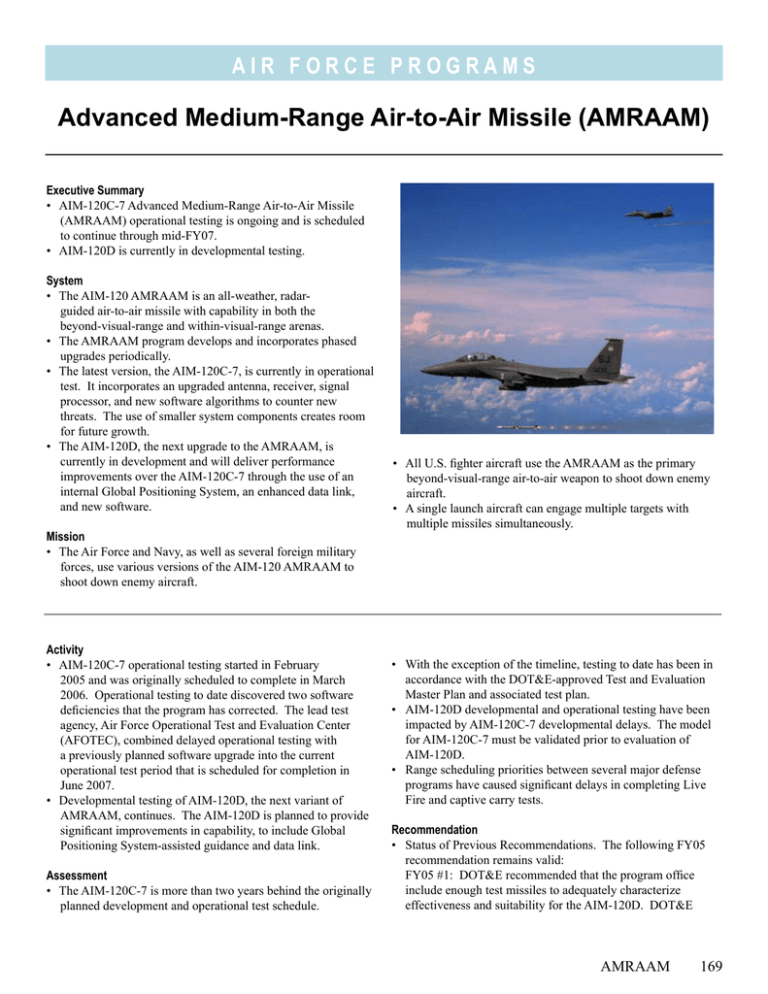
A i r F o r c e P RO G R A M S Advanced Medium-Range Air-to-Air Missile (AMRAAM) Executive Summary • AIM-120C-7 Advanced Medium-Range Air-to-Air Missile (AMRAAM) operational testing is ongoing and is scheduled to continue through mid-FY07. • AIM-120D is currently in developmental testing. System • The AIM-120 AMRAAM is an all-weather, radarguided air-to-air missile with capability in both the beyond-visual-range and within-visual-range arenas. • The AMRAAM program develops and incorporates phased upgrades periodically. • The latest version, the AIM-120C-7, is currently in operational test. It incorporates an upgraded antenna, receiver, signal processor, and new software algorithms to counter new threats. The use of smaller system components creates room for future growth. • The AIM-120D, the next upgrade to the AMRAAM, is currently in development and will deliver performance improvements over the AIM-120C-7 through the use of an internal Global Positioning System, an enhanced data link, and new software. Mission • The Air Force and Navy, as well as several foreign military forces, use various versions of the AIM-120 AMRAAM to shoot down enemy aircraft. Activity • AIM-120C-7 operational testing started in February 2005 and was originally scheduled to complete in March 2006. Operational testing to date discovered two software deficiencies that the program has corrected. The lead test agency, Air Force Operational Test and Evaluation Center (AFOTEC), combined delayed operational testing with a previously planned software upgrade into the current operational test period that is scheduled for completion in June 2007. • Developmental testing of AIM-120D, the next variant of AMRAAM, continues. The AIM-120D is planned to provide significant improvements in capability, to include Global Positioning System-assisted guidance and data link. Assessment • The AIM-120C-7 is more than two years behind the originally planned development and operational test schedule. • All U.S. fighter aircraft use the AMRAAM as the primary beyond-visual-range air-to-air weapon to shoot down enemy aircraft. • A single launch aircraft can engage multiple targets with multiple missiles simultaneously. • With the exception of the timeline, testing to date has been in accordance with the DOT&E-approved Test and Evaluation Master Plan and associated test plan. • AIM-120D developmental and operational testing have been impacted by AIM-120C-7 developmental delays. The model for AIM-120C-7 must be validated prior to evaluation of AIM-120D. • Range scheduling priorities between several major defense programs have caused significant delays in completing Live Fire and captive carry tests. Recommendation • Status of Previous Recommendations. The following FY05 recommendation remains valid: FY05 #1: DOT&E recommended that the program office include enough test missiles to adequately characterize effectiveness and suitability for the AIM-120D. DOT&E AMRAAM 169 A i r F o r c e P RO G R A M S remains concerned that the current number of shots planned may be insufficient to address all requirements and fully characterize operational effectiveness. • FY06 Recommendations. 1. The Navy and Air Force must establish an independent validation plan for the models used for effectiveness evaluation. This plan must be approved by DOT&E prior to use. 170 AMRAAM 2. The Range Commander’s Council, in coordination with all test ranges and laboratories, must incorporate a seamless exchange of information between the various range complex and laboratory system matter experts and provide better access to test resource capabilities.
